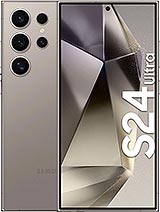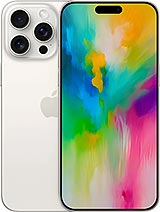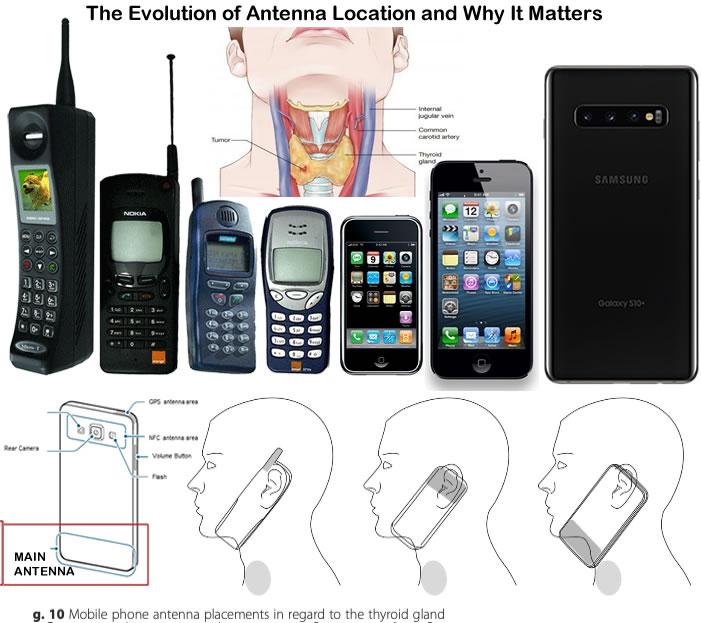Compare Your Phone’s Radiation
Galaxy S24 Ultra vs iPhone 16 Pro Max
Samsung Galaxy S24 Ultra vs Apple iPhone 16 Pro Max
Samsung Galaxy S24 Ultra

Original price was: $69.99.$45.47Current price is: $45.47.
Apple iPhone 16 Pro Max

Original price was: $69.99.$45.47Current price is: $45.47.
| Samsung Galaxy S24 Ultra | Apple iPhone 16 Pro Max |
|---|---|
| Head SAR (Cellular Only) (24.8% Difference) | |
| 1.26 W/kg | 1.01 W/kg |
| Body SAR (Cellular Only) (85.5% Difference) | |
| 0.62 W/kg | 1.15 W/kg |
| Hot Spot SAR (Cellular Only) (9.6% Difference) | |
| 1.26 W/kg | 1.15 W/kg |
| Head SAR (Wi-Fi + Cellular) (12.8% Difference) | |
| 1.59 W/kg | 1.41 W/kg |
| Body SAR (Wi-Fi + Cellular) (2.0% Difference) | |
| 1.52 W/kg | 1.55 W/kg |
| Hot Spot SAR (Wi-Fi + Cellular) (6.9% Difference) | |
| 1.45 W/kg | 1.55 W/kg |
When comparing flagship smartphones like the Apple iPhone 16 Pro Max and the Samsung Galaxy S24 Ultra, one crucial factor that consumers often overlook is the Specific Absorption Rate (SAR)—a measure of the radiation emitted by these devices and absorbed by the human body. Although both companies comply with FCC standards, the SAR testing methodologies and design choices of Apple and Samsung differ significantly. These differences can impact the real-world exposure to radiation that users experience.
In this article, we will dive deeply into how Apple and Samsung conduct SAR testing, explore the nuances of antenna placement, and examine how historical FCC testing guidelines, established in the 1990s, allow for some variance in the way SAR values are reported. We’ll clarify the impact of the inverse square law on SAR readings, debunk myths around lower SAR values equating to safer phones, and emphasize the importance of real-world testing in understanding RF exposure.
What Is SAR and Why Does It Matter?
Specific Absorption Rate (SAR)
The Specific Absorption Rate (SAR) quantifies the rate at which the human body absorbs RF energy from a device like a smartphone. It is measured in watts per kilogram (W/kg), typically for both the head and the body. The FCC sets the maximum SAR limit at 1.6 W/kg, averaged over 1 gram of tissue, while Europe’s limit is 2.0 W/kg averaged over 10 grams of tissue.
SAR guidelines focus on thermal effects—the heating of body tissue when exposed to radiation. However, growing evidence suggests that non-thermal biological effects—such as DNA damage, oxidative stress, and cognitive impairments—may occur at radiation levels far below the thermal limits. Despite this, both Apple and Samsung design their phones to meet these outdated guidelines, even though real-world usage may expose users to higher radiation levels.
Apple’s SAR Testing Methodology: The 5mm Standard
The 5mm Testing Distance
Apple has consistently tested its devices at the minimum allowable distance of 5mm from the body. This shorter distance theoretically results in higher SAR values, as the closer the phone is to the body, the more radiation is absorbed due to the inverse square law. According to this law, the intensity of radiation decreases with the square of the distance from the source, so even small increases in distance can lead to significantly lower SAR readings.
Apple’s decision to test at 5mm reflects real-world usage more accurately than higher-distance tests. In everyday life, most people keep their phones close to their bodies—in pockets, bags, or held in their hands. Testing at 5mm helps ensure that Apple’s reported SAR values reflect the higher levels of radiation absorbed when phones are carried in these ways.
Samsung’s SAR Testing Methodology: The 15mm Standard
The 15mm Testing Distance
In contrast to Apple, Samsung has historically tested many of its devices, including the Galaxy S24 Ultra, at the maximum allowable distance of 15mm from the body. While this may result in lower SAR values on paper, it does not accurately reflect how most people use their phones. In everyday life, phones are often much closer to the body than 15mm—usually in pockets or held against the body—meaning that the actual radiation exposure could be much higher than the reported SAR values.
Testing at 15mm allows Samsung to report lower body SAR values, which might create the impression that the Galaxy S24 Ultra emits less radiation. However, due to the inverse square law, moving the phone from 15mm to 5mm from the body can lead to a significant increase in radiation absorption. Thus, the perceived safety based on these lower SAR values can be misleading, as the real-world exposure at a closer distance would be much higher.
Antenna Placement and Radiation Absorption
Samsung has employed antenna placement strategies that aim to lower SAR values by placing the antennas farther from areas where SAR is measured. This reduces the measured SAR values but may not reduce overall radiation exposure. Instead, the radiation could be absorbed in other areas of the body, potentially leading to uneven exposure that is not fully captured in standard SAR tests.

The Inverse Square Law and Its Impact on SAR Values
The inverse square law plays a crucial role in understanding SAR values and the difference between the 5mm testing distance used by Apple and the 15mm testing distance used by Samsung. According to this law, the intensity of radiation decreases with the square of the distance from the source. This means that increasing the distance between the phone and the body significantly reduces the measured SAR value.
For example:
- A phone tested at 5mm from the body will have a higher SAR value compared to a phone tested at 15mm.
- However, moving a phone tested at 15mm closer to the body in real-world use will significantly increase radiation exposure, even though the SAR value reported from the 15mm test appears lower.
FCC Loophole: 5mm vs. 15mm Testing Distances
One key factor in SAR testing is the distance between the phone and the body during testing. The FCC’s guidelines, which date back to the 1990s, allow manufacturers to choose a separation distance between 5 mm and 15 mm during body SAR testing. This seemingly small difference can have a significant impact on SAR values.
Why the 5mm Testing Distance Is More Realistic
In practical terms, most people carry their phones closer than 15mm to their bodies—often in their pockets or hands. Therefore, Apple’s decision to test at 5mm provides a more accurate reflection of real-world usage and the radiation exposure users may experience. Samsung’s 15mm testing distance, while technically within FCC guidelines, offers misleadingly low SAR values that don’t accurately represent real-world conditions.
SAR Comparison: iPhone 16 Pro Max vs. Galaxy S24 Ultra
Head SAR and Body SAR Values
What These Numbers Tell Us
- Head SAR (Cellular Only): The iPhone 16 Pro Max has a lower head SAR value (1.01 W/kg) compared to the Galaxy S24 Ultra (1.26 W/kg), making it a better option for those concerned about radiation exposure to the head during calls.
- Body SAR (Cellular Only): Samsung’s Galaxy S24 Ultra appears to outperform the iPhone 16 Pro Max in terms of body SAR, with a much lower body SAR value (0.62 W/kg) compared to the iPhone (1.15 W/kg). However, this advantage is likely due to Samsung’s 15mm testing distance, which doesn’t reflect real-world usage where phones are typically much closer to the body.
- Wi-Fi + Cellular SAR Values: When using Wi-Fi and cellular simultaneously, both phones exhibit higher SAR values, with the iPhone 16 Pro Max having a 1.55 W/kg body SAR and the Galaxy S24 Ultra slightly lower at 1.52 W/kg.
Why Are SAR Values Not Reliable Indicators of Safety
The Limitations of SAR Testing
SAR values provide a baseline for understanding RF radiation exposure, but they do not capture the full scope of potential health risks. SAR tests focus only on thermal effects—the heating caused by RF radiation. However, research has shown that non-thermal biological effects—such as DNA damage, oxidative stress, and neurological disruptions—can occur at radiation levels far below the current regulatory limits.
For instance, studies have linked long-term phone use to:
- Increased cancer risk, particularly brain tumors.
- Hormonal disruptions, including lowered testosterone levels.
- Reproductive health risks, such as reduced sperm count.
- Cognitive impairments, especially in memory and focus.
Given that SAR values are based on outdated thermal-only guidelines, they do not account for these non-thermal biological effects. Therefore, while the iPhone 16 Pro Max and Galaxy S24 Ultra meet FCC safety standards, these standards themselves are outdated and inadequate.
Why FCC Guidelines Need to Change
The 1990s Testing Loophole
The FCC’s SAR guidelines date back to the 1990s, when mobile phones were far less powerful, and their usage was far more limited. The 5mm to 15mm testing distance loophole allows manufacturers to report lower SAR values by testing their devices at greater distances from the body, even though real-world usage brings the phone much closer.
Calls for Updated Guidelines
In recent years, organizations such as the International Commission on the Biological Effects of Electromagnetic Fields (ICBE-EMF) and RFK Jr. have called for updated SAR testing that considers both thermal and non-thermal effects. The RFK Jr. case against the FCC highlighted the agency’s failure to justify its refusal to revise its guidelines, even in the face of mounting scientific evidence of biological harm from RF radiation.
Making an Informed Choice
When comparing the iPhone 16 Pro Max and the Samsung Galaxy S24 Ultra, it’s essential to consider more than just SAR values. While both phones meet FCC guidelines, these guidelines are outdated and fail to account for real-world usage and the potential non-thermal effects of RF radiation.
Key Takeaways:
- Apple’s 5mm testing distance offers a more realistic reflection of real-world exposure but results in higher SAR values.
- Samsung’s 15mm testing distance results in lower SAR values, but these values may not accurately reflect actual usage conditions.
- Consumers should be aware that lower SAR values do not necessarily mean safer phones. The inverse square law shows that small increases in distance can dramatically reduce SAR readings without reducing actual radiation output.
Ultimately, the choice between these two smartphones comes down to personal priorities. However, given the growing body of evidence linking RF radiation to health risks, consumers should take practical steps to minimize their exposure:
- Use speakerphone or hands-free devices when possible.
- Keep phones out of pockets and away from the body during use.
- Stay informed about the latest research on RF radiation safety.
Both the Apple iPhone 16 Pro Max and the Samsung Galaxy S24 Ultra are advanced, feature-rich devices, but when it comes to radiation exposure, it’s important to recognize the limitations of SAR testing and advocate for updated safety guidelines that reflect modern usage patterns and scientific knowledge.
Are Current SAR Testing Standards Outdated?
While the Samsung Galaxy S24 Ultra and the Apple iPhone 16 Pro Max meet the FCC’s SAR guidelines, it’s crucial to acknowledge that these standards were set decades ago, largely based on thermal effects—the heating caused by radiation—without sufficient consideration for non-thermal biological effects.
Recent studies have indicated that even low levels of RF radiation can cause biological changes, such as DNA damage, oxidative stress, and potential cancer risks, without significant heating. The FCC and other regulatory bodies have yet to update their safety guidelines to reflect the latest scientific research on non-thermal effects, leaving consumers at risk.
The Impact of Non-Thermal Effects
Many peer-reviewed studies have shown that RF radiation can cause adverse health effects even at levels below the current safety limits. These include:
- Increased risk of brain tumors such as glioma and acoustic neuroma.
- Hormonal disruption leading to issues like reduced testosterone levels.
- Damage to reproductive health, especially in males, due to the proximity of phones to the body.
- Cognitive impairment and memory loss linked to long-term phone use.
Despite mounting evidence, ICNIRP (International Commission on Non-Ionizing Radiation Protection) and other regulatory bodies continue to rely on outdated, thermal-based models, ignoring the growing body of research showing the long-term health risks from non-thermal exposure.
Regulatory Capture: A Critical Issue
A major reason why regulatory standards have not been updated to reflect recent scientific findings is regulatory capture, where industry influence permeates regulatory bodies. Both Apple and Samsung adhere to these outdated FCC guidelines, but these guidelines are heavily influenced by industry stakeholders.
The FCC’s failure to update safety guidelines has been the subject of lawsuits and public outcry. Most notably, RFK Jr. led a legal challenge against the FCC, where a federal court ruled that the agency had failed to justify its refusal to update its safety guidelines. This ruling highlighted the discrepancy between scientific evidence and regulatory actions, with the court calling for a reassessment of the current limits.